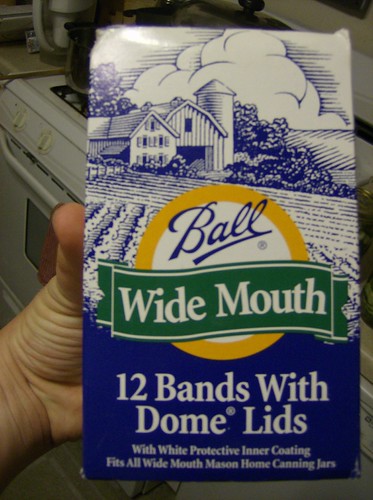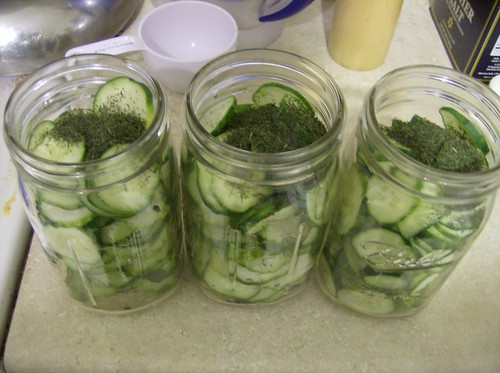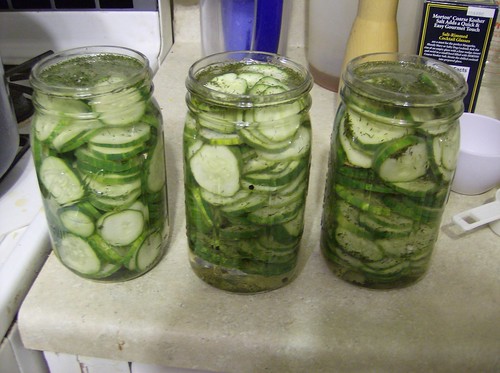Day 135- Pickles
As a belated Mother's Day Present, this week's entries are created by request. My mom wants to learn how to make pickles.
To better understand the pickling process--more than just stuff in brine--you have to understand mason jars. Not only that, but working with mason jars can be dangerous if you don't use them properly.
Mason jars were invented in 1884 as a convenient way to store perishables. In a world where there was no refrigeration, one needed a way to keep an air tight seal free of bacteria. Mason jars seemed to have gotten the job done since 124 years later, they are still around.
Mason jars have three parts, the glass jar, a metal band, and a metal lid. The jar a nd band are both reusable, the metal lid is not. The lid has a sealing agent that only works once.
nd band are both reusable, the metal lid is not. The lid has a sealing agent that only works once.
Mason jars are available at most large grocery stores and hardware stores. If you find jars at a thrift store or second hand store inspect them for any large chips or cracks. Those are great spots for bacteria to hide. Lids and bands are available where ever new cans are sold.
Canning does not take a lot of work. But it does take some boiling, which we can cover tomorrow.
After boiling in the cans, any bacteria is killed and the slow fluctuation of temperature causes the hot, expand gasses to condense and create a vacuum, thus preserving your fruits, veggies or sauces.
As for your pickles, you have cleaned and cut your cucumbers, you now need to create a brine.
For your brine, you need:
6 cups of water
2 1/2 cups of vinegar (I use cider or distilled white)
1/2 cup kosher salt
Bring your brine to a boil, and stir until all the salt is dissolved.
In the bottom of your clean mason jars, add one clove of garlic and about a half dozen whole pepper corns.
Proceed to pack your jars with cucumbers until full. Leave about 2 inches of head space in order to make room for the brine. Top with about 2 tablespoons of whole dill weed.
Your jars should look as such:
Here, there are cucumbers packed into clean jars with the pickling spices. You can also purchase pickling spices from Ball or the grocery store, but I like the simplicity of mixing the spices myself.
Carefully add the brine to the jars, keeping about an inch of head space at the top. The cucumbers will most likely float. That is ok.
In the photo below, I overfilled the jars. This was before I learned about the importance of head space. Having head space makes it easier to open when you are ready for those delicious pickles.
At this point, make sure any utensils you use to stir or pack are rubber, plastic or wood. Using a metal utensil will run the risk of oxidizing the pickles. Not too appetizing.
Tomorrow, I will explain the actual canning process. It is not too difficult.
Competency moment of the day:
I am sending in the house application for a new house in Columbia Heights. It is a cute house for $1500 less a month. Although we have to lose 2 people, it is going to be a great new home.
Thursday, May 15, 2008
Day 135-Pickles
Subscribe to:
Post Comments (Atom)
No comments:
Post a Comment